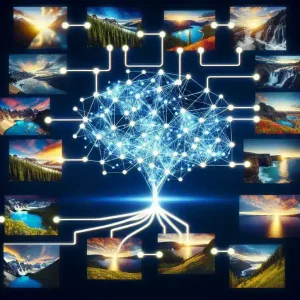Introduction
In the rapidly evolving landscape of cloud computing, security remains a paramount concern for organizations around the globe. As businesses increasingly adopt containerization for application deployment, understanding how container isolation affects cloud security boundaries is crucial. This article delves into the intricacies of container isolation, its implications for cloud security, and best practices for organizations aiming to enhance their security posture.
Understanding Containerization
Containerization is a lightweight alternative to traditional virtualization, where applications run in isolated environments known as containers. These containers share the host operating system’s kernel but operate independently, allowing for faster deployment, resource efficiency, and scalability. Some popular container technologies include Docker, Kubernetes, and OpenShift.
The Role of Container Isolation
Container isolation refers to the mechanisms that separate containers from one another and from the host system. This isolation is essential for several reasons:
- Security: Proper isolation prevents unauthorized access between containers, mitigating the risk of attacks.
- Resource Management: Isolation ensures that containers do not interfere with each other’s resource usage, leading to more stable applications.
- Fault Tolerance: In the event of a failure, isolated containers can be restarted without affecting others.
How Container Isolation Enhances Security Boundaries
When deploying applications in the cloud, security boundaries must be clearly defined. Container isolation enhances these boundaries in several significant ways:
1. Minimizing Attack Surface
By isolating applications, the potential attack surface is minimized. Each container operates independently, which means that a vulnerability in one container does not automatically compromise others. This segmentation is crucial in multi-tenant environments, where various applications may be hosted on the same infrastructure.
2. Containment
In the unfortunate event of a security breach, container isolation helps contain the breach within a single container. This containment strategy can prevent lateral movement across the cloud environment, thus protecting sensitive data and resources.
3. Enhanced Monitoring and Logging
With each container isolated, organizations can implement specific monitoring and logging for individual containers. This enhanced visibility allows security teams to quickly identify and respond to suspicious activities, thereby improving overall security posture.
Challenges of Container Isolation
While container isolation offers numerous advantages, it also presents unique challenges that organizations must address:
1. Configuration Complexity
Managing and configuring isolated containers can be complex, especially in large-scale environments. Misconfiguration can lead to vulnerabilities that compromise the intended isolation.
2. Shared Kernel Vulnerabilities
Despite their isolation, containers share the host operating system’s kernel. A vulnerability in the kernel can affect all containers, making it crucial to keep the underlying infrastructure secure.
Best Practices for Securing Containerized Environments
To maximize the benefits of container isolation while mitigating risks, organizations should adopt the following best practices:
1. Regularly Update and Patch
Ensure that all containers, as well as the host operating system, are regularly updated and patched to protect against known vulnerabilities.
2. Implement Network Policies
Utilize network policies to restrict communication between containers. This adds an additional layer of security by limiting exposure.
3. Use Container Security Tools
Leverage specialized container security tools that provide scanning, monitoring, and management capabilities to enhance security measures further.
4. Conduct Security Audits
Regularly perform security audits to identify and rectify configuration issues, ensuring that isolation measures are correctly implemented.
Future of Container Isolation and Cloud Security
The future of container isolation in cloud security looks promising. As organizations continue to adopt cloud-native architectures, innovations in container security will likely emerge, focusing on:
1. Advanced Isolation Techniques
Future advancements may include more robust isolation techniques, such as hardware-based isolation, which could provide further security enhancements.
2. AI and Machine Learning
AI and machine learning technologies could play a pivotal role in improving threat detection and response times in containerized environments.
3. Enhanced Compliance Measures
As regulatory requirements evolve, container isolation will need to adapt to meet compliance standards, ensuring that organizations remain within legal boundaries.
Conclusion
In conclusion, container isolation significantly impacts cloud security boundaries, offering enhanced protection against threats while presenting unique challenges. By understanding these dynamics and implementing best practices, organizations can leverage the benefits of containerization while safeguarding their cloud environments. As we look towards the future, continued innovation in container security will be essential to staying ahead of emerging threats in an increasingly complex digital landscape.



